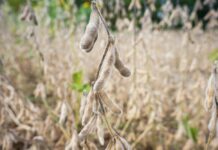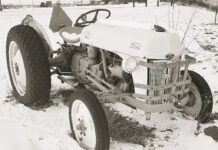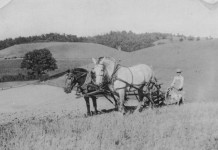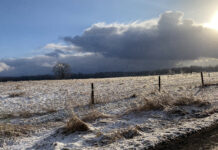
The past several years, the term “soil health“ has been used to describe soil productivity and its ability to provide the ecosystem with beneficial services.
There are multiple ways to determine soil health. There are soil tests that go more in-depth than the soil tests that are simply used to determine lime and fertilizer requirements. Another way to determine soil health is to learn to observe the indicators that the soil is missing necessary components.
Broomsedge
One indicator that many people know is that broomsedge, sometimes referred to as broom sage and poverty grass, indicates that the soil has a low pH. If the pH in the soil is low, lime can be applied.
What many people do know is that broom sedge is also an indicator of low phosphorus. Broomsedge is a native grass that grows well on sites that have low fertility or pH. It is allopathic, meaning it produces a toxin that inhibits the growth of other plants.
If you have a pasture that is full of broomsedge, feeding hay on the field and scattering nutrients will help soil fertility. The pasture will become more productive and broomsedge will disappear.
Farmers should avoid feeding in the same spot in the same field year after year. You wouldn’t buy a buggy load of fertilizer and let it set and run all out on the same spot.
Weeds
There are many weeds that grow within our pastures and hayfields. Some of them grow simply because they have a seed bank in the soil, but many are opportunistic and grow when the grasses and clovers are struggling. Soil disturbance, overgrazing, drought and poor forage stands all provide weeds the opportunity to take over.
Dandelion and broadleaf plantain both indicate compacted soil. When soil is compacted in a pasture, root growth is restricted. Slow root growth limits forage growth. Total production throughout the grazing season is decreased and it takes longer for forages to grow back after being grazed.
Water infiltration is reduced in compacted soil. During a drought, when it does rain, the soil does not soak it up. Compaction can be reduced by giving pastures adequate rest so the roots are able to grow and break through compaction. An aerator can also alleviate compacted soil.
Pigweed and smartweed usually grow in areas where fertility is high. Typically, they grow where a lot of hay has been fed. These areas can have compaction as well. One way to prevent these weeds from growing is by planting forages that will outcompete the weeds when you are done feeding hay. Mixing a pasture mix with rye or oats can provide short- term and long-term competition.
Many weeds take advantage of overgrazing. Ironweed and Canadian thistle are examples of weeds that take over when desirable forages can’t outcompete them. By keeping soil nutrient levels adequate and managing your grazing to promote grass growth, weeds can be greatly reduced. If your stocking density is high, and you rotate livestock every few days, some of the weeds will be consumed.
Many farmers and ranchers find that you can run two sheep or goats with cattle and will not see a reduction in pasture production. The sheep eat more of the weeds when they are short and the goats will browse mature weeds.












